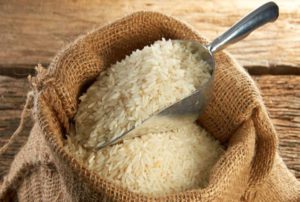EU’s ban on Indian Basmati- What went wrong?
Amidst India’s recognition as the world’s largest exporter of rice, leaving behind countries like Thailand and United States, European Union’s lowering of maximum residue limit (MRL) level for Tricyclazole fungicide used by Indian farmers has put an indirect ban on Indian basmati rice, hitting both farmers and exporters.
T
 he European Union (EU) imports 10 per cent of the rice exported by India. From January 1, 2018, the EU has set and implemented new norms to bring down the maximum MRL level for Tricyclazole- a fungicide used by most basmati growers in the country , in Basmati rice to 0.01 parts per million, which earlier was 1 part per million. This step would not only hit Indian farmers and traders, but also the European market which will also observe the rapid price hike.
he European Union (EU) imports 10 per cent of the rice exported by India. From January 1, 2018, the EU has set and implemented new norms to bring down the maximum MRL level for Tricyclazole- a fungicide used by most basmati growers in the country , in Basmati rice to 0.01 parts per million, which earlier was 1 part per million. This step would not only hit Indian farmers and traders, but also the European market which will also observe the rapid price hike.
While this major step by the EU has created a new hurdle for Indian rice farmers and basmati rice exporters, the issue is looked upon with serious discussions from various rice researchers of the country. Although, the excessive use of pesticides in agriculture has previously been talked about, several developments in areas of educating and equipping farmers with basic sustainable agricultural sustainable practices still continues to be a challenge.
Speaking on the issue, AK Singh, Director, Indian Agricultural Research Institute (IARI) said, “We are educating farmers about fungicides and pesticides- how to use, when to use and how much to use and if this is taken care then the issue of residue doesn’t come.”
Accepting EU’s drastic step as a challenge, Indian scientists are finding the solution to make Indian farming and market competent to international standards. AK Singh also mentioned about the latest achievements in the field of revolutionary steps taken towards rice production in India and told, “Last year we released Pusa Basmati 1637 which is highly resistant to blast disease and for control of blast disease Tricyclazole is used. This will make the product independent of pesticides which will substantially reduce the cost of cultivation.”
According to OECD (Organisation for Economic Co-operation and Development), China spent over $165 billion in direct and indirect farm subsidies, followed by Japan at $65 billion and the US at $ 30 billion. The Indian dairy products face import duties of 511 per cent in the EU, 93 per cent in the US, and 692 per cent in Japan. Yet, India has been accused of excessively subsidizing the agro products. India faces the restriction and regulations at international market due to various reasons. Earlier, Indian vegetables, fruits met similar fate, though the sanction was revoked last year.
In India, the FSSAI (Food Safety and Standards Authority of India) has specified the MRL of insecticides to be used on food grains. However, the implementation of the regulation is in question. The heavy use of pesticide and fungicide poses ill effect on human health.
Interestingly, the wide communication gap between the farmers, market/exporters and scientists also play a major role. The insatiable market’s demand has pushed farmers to use excessive pesticides to gain more output even though it actually depletes the soil health and increases input cost, the repercussions are either ignored or untold.
“Rice Industry has realised that it is not the fault of Tricyclazole or Isoprothiolane, but is a system failure in the greed to produce more as we haphazardly use excessive fertilizers and pesticides. Smaller packets shall be introduced, if he needs 100 grams and he is getting 500 grams, excessive use will be there.” Vijay Setia, President, All India Rice Exporters Association
As India looks forward to increase its farm exports and provides its farmers access to a global market, it must devise an effective strategy in the era of increasing protectionism. The regulatory institutions shall ensure the Indian products comply with international standards. A mechanism should be constructed to bridge the gaps which restrict the dissemination of information to farmers, who are the actually manufacturers. Proper infrastructure to store the food grains so that farmers are not compelled to use preservatives must be brought in place. India shall also explore strategies to regulate and brand its organic food so that farmers can earn more from the lesser input, given the organic food does not face any such barriers.
